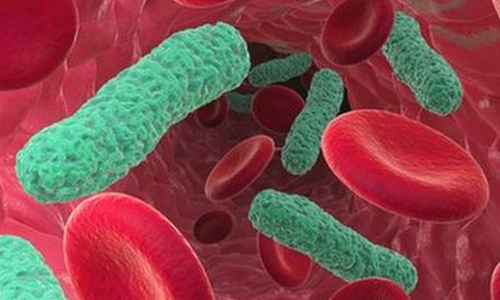FDA Approves Angiotensin-II for Septic Shock
January 3, 2018
Source: PulmCCM
 467
467

The FDA approved angiotensin-II (Giapreza) as a new intravenous vasopressor for septic shock and other forms of distributive shock. The first new FDA-approved vasopressor in decades, angiotensin-II could significantly change the management of severe septic shock.
FDA based its expedited approval (under priority review) on the ATHOS-3 trial enrolling 321 patients with shock refractory to catecholamines like norepinephrine or epinephrine. At 3 hours, almost 70% of patients with angiotensin II added reached the target blood pressure, compared to 23% receiving placebo and usual vasopressors. The study was not designed to detect a mortality benefit from angiotensin II.
Patients receiving angiotensin II also required lower doses of other vasopressors. The general strategy in the study was to wean off vasopressin first, then catecholamines, while titrating up angiotensin-II.
Angiotensin II patients experienced more thromboses, and FDA advised “Giapreza can cause dangerous blood clots with serious consequences (clots in arteries and veins, including deep venous thrombosis); prophylactic treatment for blood clots should be used.” Similar language will be on the product's label.
Wait, what thromboses?
Does Angiotensin-II Cause Blood Clots?
FDA's warning may come as a surprise to readers of the original paper in the New England Journal of Medicine, which stated "The rates of adverse events of special interest were similar in the angiotensin II and placebo groups."
Table 3 said deep venous thrombosis occurred in three patients getting angiotensin II (1.8%), vs zero in the placebo group.
But MedPage Today is reporting "In ATHOS-3, the incidence of arterial and venous thrombotic and thromboembolic events was 13%, compared with 5% in the placebo group, largely driven by deep vein thrombosis.”
The supplementary appendix does not resolve the question. Thrombosis is not included in tables S13-S15 (adverse events). Myocardial infarction, stroke, or limb or intestinal ischemia are not listed as occurring more often among angiotensin-II patients.
Endogenous angiotensin-II is implicated as a factor in microvascular thrombosis associated with hypertension. But angiotensin-II infusion was not previously considered to be prothrombotic in large veins and arteries.
The paper’s methods do not describe whether patients were receiving chemoprophylaxis (i.e., heparin) for venous thromboembolism, but it would be customary to do so at the participating centers.
So what were the actual rates of thrombosis? Are they different from what was reported previously? And if these occurred despite adequate prophylaxis, what is FDA telling us -- to put every patient receiving angiotensin-II on a heparin infusion?
PulmCCM will keep you posted what we find out -- and please comment below if you know something we don't.
Angiotensin-II for Sepsis: Available March 2018
Intensivists will likely welcome the option of angiotensin-II and its complementary mechanism of action to catecholamines and vasopressin when treating critically ill septic patients. The drug appears to be highly effective at increasing blood pressure in septic shock refractory to catecholamine infusion.
Many intensivists will likely hope for greater clarity on the observed risk of thrombosis from angiotensin-II, before shifting their practice away from use of currently available vasopressors.
The drug should hit the market in March 2018, according to its manufacturer, La Jolla.
By DduRead more on
- AZ’s Farxiga Gets FDA Priority Review For Heart Failure January 8, 2020
- Global Recall of CyPass Micro-Stent by Alcon September 3, 2018
- Breakthrough Device Designation Granted to Digital Intervention for Alzheimer’s August 27, 2018
- FDA Approved Eye Drop Oxervate to Treat Neurotrophic Keratitis August 27, 2018
- Experimental Ebola Treatments Approved by Congo as it Sees Flare-Up in Cases August 24, 2018
your submission has already been received.
OK
Subscribe
Please enter a valid Email address!
Submit
The most relevant industry news & insight will be sent to you every two weeks.



